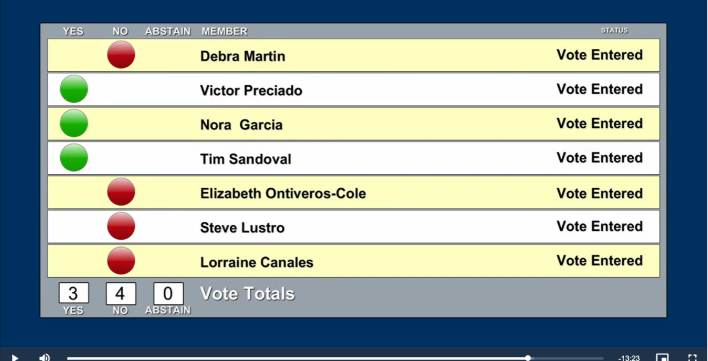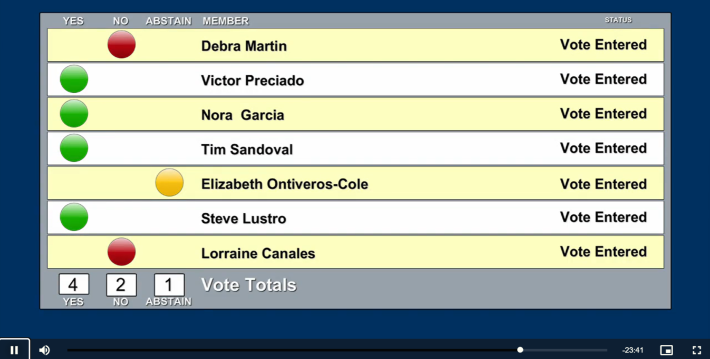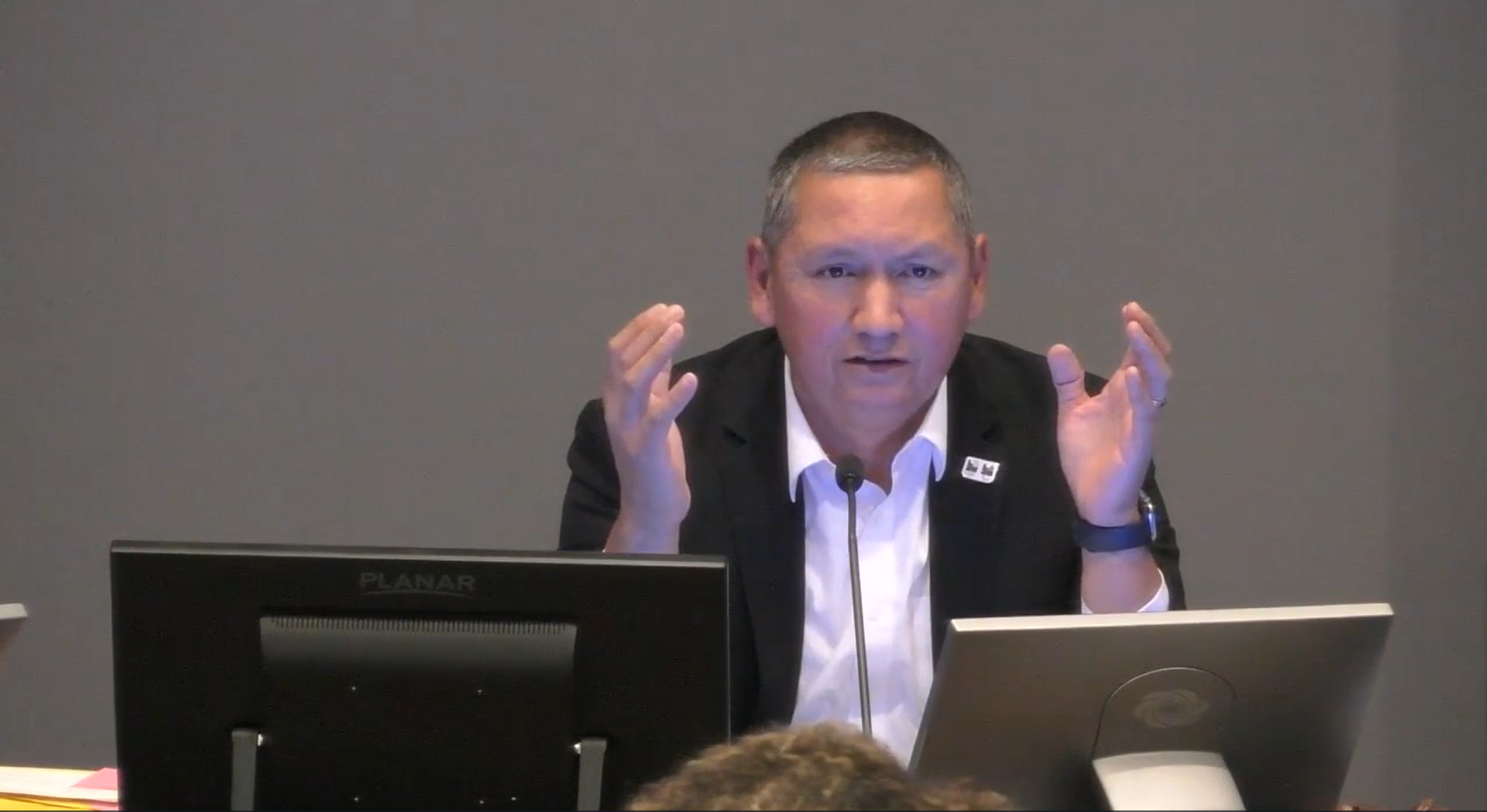After three years, the city of Pomona has finally passed a rent stabilization ordinance, though it doesn’t appear to be quite what anyone hoped for. It expires in December 2026, and doesn’t seem to have much power to track rents since being revised.
Starting back in August of 2022, Pomona enacted an urgency ordinance to prevent displacement and homelessness for residents following the economic downturn of the COVID-19 pandemic. Since then, the city has been drafting a permanent ordinance that would replace and repeal the urgency ordinance.
The ordinance caps annual rent increases at 5% (the city previously had no cap), but a reading of the ordinance from two weeks ago also called for the creation and maintenance of a rental registry. That version was narrowly voted down by the city council, 4-3.

Under the registry, landlords would have had to pay annual administrative fees and register each unit’s address, year of construction, amenities/services, room count, tenancy data, and rent cost. Landlords would also have to submit personal contact information. [Note, that reading of the ordinance allowed 50% of the annual fee to be passed onto tenants, separate from rent.]
At that late October meeting, Mayor Tim Sandoval said, “I suspect that one of the considerations on the part of this council is related to the cost that would be necessary to undertake a rent registry,” and he implored staff to bring back a new reading of the ordinance, sans registry, for another vote.
Between the council meetings on October 20 and November 3, the program’s estimated operating cost for three years rose from roughly $1.5-2.5 million to $1.8-3 million, per staff reports. The registry software – which was scrapped from the ordinance – was price tagged at $82,000.
The program is funded through December 2026, when grants from the American Rescue Plan will expire. Pomona’s budget for fiscal year 2025-26 has a $5.5 million deficit.
Upon bringing the ordinance back to council, city staff wrote in a sunset date of December 31, 2026.
Residents supporting the ordinance cited the need for extra protections for the working poor as day laborer wages plummet, SNAP benefits are lost, the public sector is gutted by the Trump administration, and ICE raids continue to destabilize the region.
Residents against the ordinance said it hurts small landlords who built Accessory Dwelling Units (ADUs) - by increasing necessary certifications, fees and penalties, and adding another rent cap besides the state’s 10% cap.
Councilmember Nora Garcia, who has been a supporter of the ordinance, initially said on Monday that she could not support the pared down version of it.
“I am the only renter on this dais,” Garcia said.
She described apartment hunting in her district, “I saw mold. I saw grease. I saw exposed water heaters. I saw holes in ceilings. I saw cockroaches. I saw ants. I saw disgusting, moldy bathrooms that would take an entire gallon of CLR to make the bathtub acceptable.”
“We need rental stabilization. We need a rental inspection ordinance. We need a rental registry. And it boggles my mind that we got so close to doing the right thing, and now we are stuck here with the bare minimum for a year,” the councilmember lamented.
But Garcia would end up voting yes. And so would Councilmember Steve Lustro, who voted against the ordinance in October.
For Lustro, his skepticism on the previous reading came down to the city budget.
“I've often said from this dais during my tenure up here,” Lustro said, “that I am not interested in voting to send the city down a path to insolvency.”
Despite budgetary concerns like Measure Y, a new county fire contract, and the expiration of ARP funds, Lustro still suggested that the ordinance was worth passing.
“I think that this is a good compromise. It doesn't negatively impact the city with respect to the budget, and I think it continues to provide what I believe to be adequate protections for our tenants, while also not being totally unreasonable to our housing providers,” Lustro said.
Councilmember Debra Martin, owns two rentals, and voted no.
“[There] is an elephant in the room,” Martin began. “Not all apartments are going to be protected. It [applies to] pre-1995 [units] and people don't talk about it, but [when] Proposition 33 [was on the ballot in 2024] the city of Pomona residents voted no. That change would have [applied to] the whole city of apartments, new and old. This rent control, this doesn't change a thing for many, many housing providers, they're still going to have a market rate.”
Martin also elaborated that a 5% rent cap is untenable for landlords of pre-1995 apartments because of higher maintenance needs. “And with a mortgage on the rentals, there's not much room to make any money,” she said. “If you are having a major plumbing problem and you have to replumb your unit, or, in my case, the whole house, that's $20,000 [...] I didn't make any money for that year at all, not $1 in fact. It was minus, plus paying for gardeners, trash and water.”
She was joined in her “no” vote by Councilmember Lorraine Canales.
Councilmember Elizabeth Ontiveros-Cole abstained from voting.
As before, Victor Preciado voted for the ordinance, and the usually soft spoken Mayor Tim Sandoval displayed a rare show of passion on the dais.

Sandoval began by questioning the effectiveness of the Tenant Protection Act of 2019.
“I believe most landlords are good people. They care about their properties,” he said. “There are some that don't care. They're not following the law. But would we know if they're not following the law? [...] Who's holding those landlords accountable, who are not following the law?”
Staff responded that the onus is on residents across the state to come before their city councils, some of which are exploring similar ordinances, and some of which are not.
“There's a view that, because there's this state law, that all of a sudden renters are being supported by the fact that you could only raise [rent] 5% plus CPI [Consumer Price Index], and it gets capped at 10% correct?” Sandoval asked, incredulously.
“If this doesn't pass tonight, it is a huge, huge victory for those who are in power,” he continued. “We know there are slum lords [...] we know that they're overcharging residents.”
“The bottom line is that we have far too many residents who are apartment dwellers and renters who are struggling to survive,” Sandoval said. “We're already paying for it; there are consequences to families and children and older adults when they are struggling to put food on the table and to be able to pay their rent.”
The Mayor concluded, “This is not a cure all. This is a specific housing strategy to keep people stabilized at a rent that they can manage from year to year, so that they can plan and perhaps keep their kids in the school system, and build connections to their neighbors, and go to the park and be part of our recreation programs. That's what this is.”
Streetsblog’s San Gabriel Valley coverage is supported by Foothill Transit, offering car-free travel throughout the San Gabriel Valley with connections to the A Line Stations across the Foothills and Commuter Express lines traveling into the heart of downtown L.A. To plan your trip, visit Foothill Transit. “Foothill Transit. Going Good Places.” Sign-up for our SGV Connect Newsletter, coming to your inbox on Fridays!







